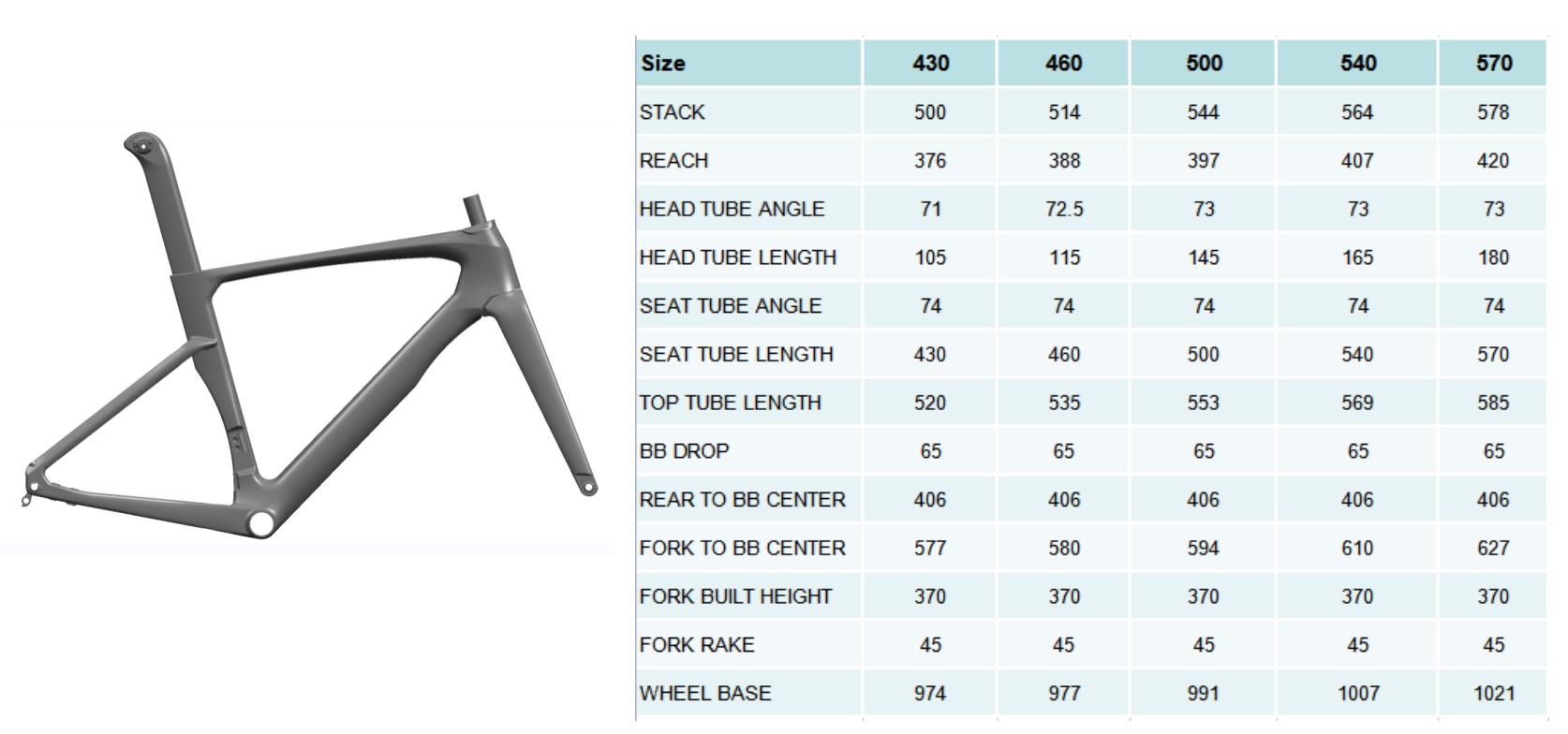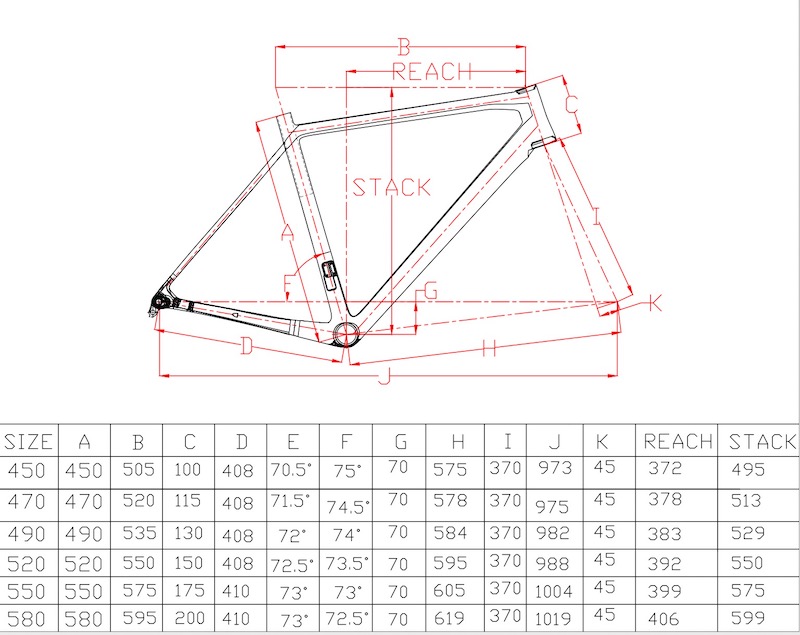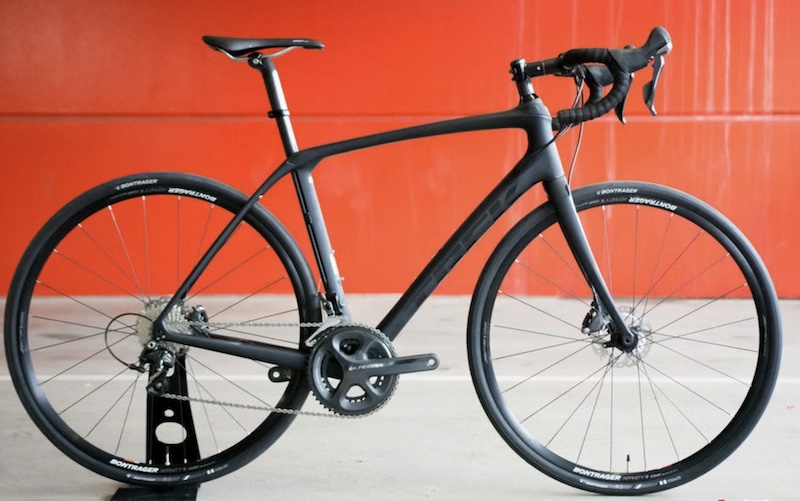Categories
New Blog
Tags
AERO ROAD BIKE
Who is this type of bike suited too? Racers, crit riders, short course triathletes.
Standout-features: Aggressive geometry, aero tube profiles, deep section wheels.
Disadvantages: Comfort generally sacrificed for speed, weight, cross-wind performance
Aggressive geometry

The main priority of aerodynamic bikes is to reduce drag and be as slippery as possible in the wind. 85% of resistance a rider needs to overcome is from themselves, so it makes sense to reduce a riders frontal profile as much as possible. As a result, the headtube on aero bikes is short creating a lower frontal profile and having less resistance to overcome. As a general rule the headtube on a medium sized aero bike will be under 140mm, opposed to an endurance bike which will be over 160mm.
Working in combination with a short headtube, aero bikes will have a longer frame reach than endurance bikes. Reach is measured horizontally from the centre of the bottom bracket axle to the headtube. The frame reach will provide an insight into the purpose of the bike.
For example, Trek's aero bike the Madone has a 39.5cm reach compared to the endurance focused Domane, which has a reach of 37.7cm. Both measurements are taken from a 56cm frame highlighting aero bikes aim to stretch a rider out, while endurance bikes aim to have the rider in a more upright position.
It's important to acknowledge the difference between the frame reach and a rider's reach. A rider's reach is measured from the tip of saddle to the centre of the handlebars. Unlike the frame reach, a riders reach can be altered with a longer stem or having a greater saddle setback. Modifying a riders reach can make an endurance orientated bike closer represent an aero bikes geometry and vice versa. There are however limitations with this approach. The more you manipulate and move away from the bikes intended geometry the less likely is it going to perform as intended.
The downside to an aero bikes aggressive geometry frames is that many riders lack the flexibility to achieve the intended position or the core strength to hold themselves in that position for extended periods of time. If you are not flexible enough to get into that lowered position, the aerodynamic benefits will be lost. And if you are forcing yourself into that position you're likely to cause yourself an injury.
LIGHTWEIGHT ROAD BIKE
Who is this type of bike suited too? Riders that love to climb and all-rounders.
Standout-features: Lightweight, versatile.
Disadvantages: Falls in the middle of an aero bike's speed and an endurance bikes comfort.
Lightweight
Lightweight bikes tend to fall in the middle of many performance features of true aero and endurance bikes, making them the bike of choice for General Classification riders and team leaders. They aren't as comfortable as an endurance bike, but typically moreso than an aero bike. They aren't as stiff as an aero bike, but stiffer than endurance bikes. The handling is a lot sharper than an endurance bike and on par with an aero bike, although with the reduced weight is even more agile. The braking can't match a disc equipped endurance bike but it's much better than an aero bike that often compromises braking for aerodynamics.

The tube profiles of lightweight bikes are as thin as possible without overly compromising stiffness or durability. The two are direct trade-offs but lightweight bikes manage to find the correct balance. The thinner tubes keep weight down and allow small amounts of flex, reducing road vibration and making a more comfortable ride. To find the balance between weight and stiffness, lightweight frames will aim to improve strength and stiffness in the bottom bracket, seat tube, headtube and chain stays by using different types of carbon or laying more fibers.
Lightweight bikes may not be as stiff as aero bikes, but their stiffness to weight ratio is much better. Aero bikes have much larger and thicker tube profiles making them incredibly stiff, but that extra material in association with other features make them heavy. Lightweight bikes offer similar stiffness but shed much of the weight.
Geometry
The geometry of lightweight bikes frames tends to vary between manufacturers depending on their line-up of bikes. Some manufacturers with dedicated aero, endurance and lightweight bikes may alter the geometry towards a more aggressive fit because they have the endurance bike as an alternative; whereas other manufacturers may create a more 'relaxed' geometry for their lightweight bike because they don't have that luxury. As mentioned above, lightweight bikes are the modern day all-rounders so their geometry can vary quite a bit.
ENDURANCE ROAD BIKE
Who is this type of bike suited too? Long distance riders, those that ride on rough roads, the vast majority of riders.
Standout-features: Comfort, upright ride position, durability.
Disadvantages: Weight penalty, handling not as agile.
Comfort and stability
The purpose of endurance bikes is to be comfortable, robust and durable. They were first created to smooth out the cobbles of Northern France in professional 'Classics' races. These races are all-day affairs at high speeds across the roughest roads imaginable. To try and remove the fatigue caused to the riders by road vibration, 'endurance' bikes were created with built in compliance and greater clearance to allow for larger, more shock absorbing tyres.

As well as these specific technologies, almost all endurance bikes will have greater clearance in the fork and rear triangle to allow for wider tyres. Using wider tyres has many advantages, which is why there has been a industry wide shift towards them in recent years. Wider tyres are able to run at a lower pressure than skinnier tyres, reducing road vibration and providing a smoother rider. They also reduce rolling resistance and create some inertia with the extra weight once they are rolling at speed. Most endurance bikes will come standard with 28mm tyres, in some cases more. The Domane we used for this case study came with 32mm tyres as standard.
Frame geometry
In stark contrast to aero bikes, endurance bikes aim to put the rider in a more upright position. The headtube and wheelbase is longer, the frame reach is reduced and the frame stack is increased.
This combination creates less aggressive positioning, making it easier for riders to travel long distances without stressing their back, shoulders, neck and hamstrings. The positioning obviously requires less flexibility which is a good thing given the majority of us would have trouble touching our toes. The riders frontal profile is larger in this position meaning they 'catch' more wind and have to overcome a greater resistance, but comfort equals speed and in this more comfortable position, a rider might be able to produce more power for longer, ultimately achieving a better result than trying to get into an uncomfortable, overly aggressive position.
In association with wider tyres, the elongated wheelbase also increases stability of the bike, essentially creating a greater centre of gravity. Further aiding stability of endurance bikes is wider handlebars. Endurance bikes will typically have 44cm or 46cm handlebars, compared to 40cm or 42cm handlebars for aero and lightweight bikes. As a bikes frame increases the handlebar size increases with it, as it is assumed a larger rider is using it, but regardless of the frame size you can expect the handlebars of an endurance bike to 2cm larger than an aero or lightweight bike at any size.
The headtube angle of a bike will change how the bike feels and handles. A steep headtube angle will result in a more responsive ride, while a shallower head tube angle will create more ‘relaxed’ handling. The comfort orientated Domane once again gets the endurance treatment with a headtube angle of 71.3 degrees compared to the steep 73 degree angle of the Emonda and Madone.
These features make it easier to handle the bike, although some agility is lost as a consequence.
Long distance riding
As the name suggests, endurance bikes are built for long distance riding. We've spoken about the comfortable geometry and in-built compliance, but there are a few other features to keep the bike and rider going all day long in any weather conditions.
Endurance bikes will almost always feature a 'compact' front crankset with a wide ratio cassette. This set-up allows for easy-pedaling and is small enough to overcome any steep hills or tired legs at the end of a long day. The rear cassette will typically be 11-28 or 11-32, and when paired with a 50/34 front crankset is enough to overcome any ride profile.
The inclusion of disc brakes is a popular trend in endurance road bikes. These bikes were the first road bike to adopt disc brakes and the evolution is slowly continuing to lightweight and aero bikes having them as well. The type of riding endurance bikes cater for make disc brakes the best choice. Disc brakes out perform rim brakes in all weather conditions, take less effort to work and provide more predictable and powerful braking. The only scenario where disc brakes aren't the preferred option is if you are planning to race your bike as they aren't yet legal and add some negligible weight. Disc brakes also allow for greater tyre clearance as manufacturer's don't have to fit direct mount caliper brakes, so the fork and rear triangle can be manipulated further than normal.
If you are tossing up between the three bikes and struggling to make a decision, comfort and durability should be the priorities for the majority of riders who aren't racing. The relaxed geometry and robust nature of endurance bikes should have them in first place for most people. If you plan on racing then it's a flip of the coin between the lightweight or aero option. If lumpy road races or climbing challenges are your thing, then lightweight is the way to go. For those that like to go fast and take the glory on a crit circuit or STRAVA segment, you may want to look at a racier aero option. And the best option of all, have one of each.